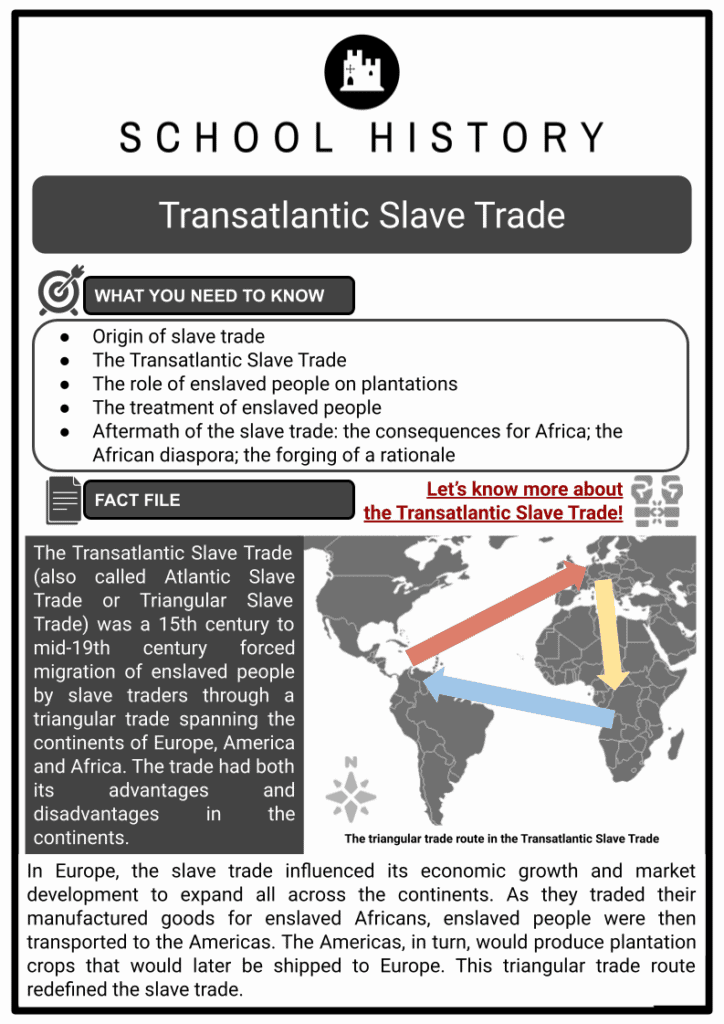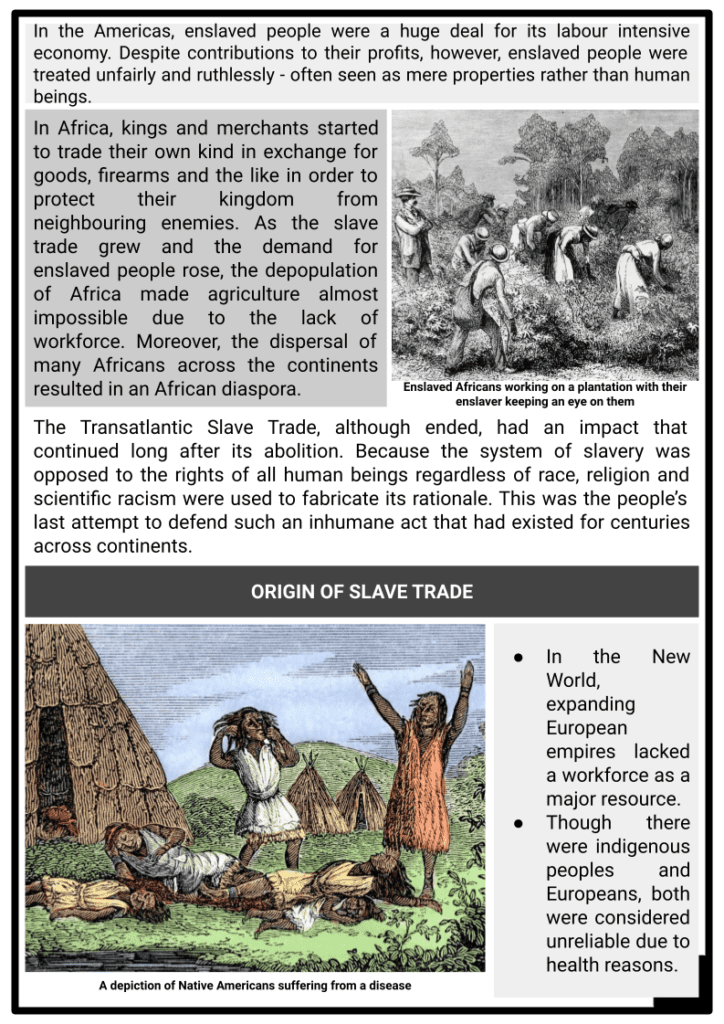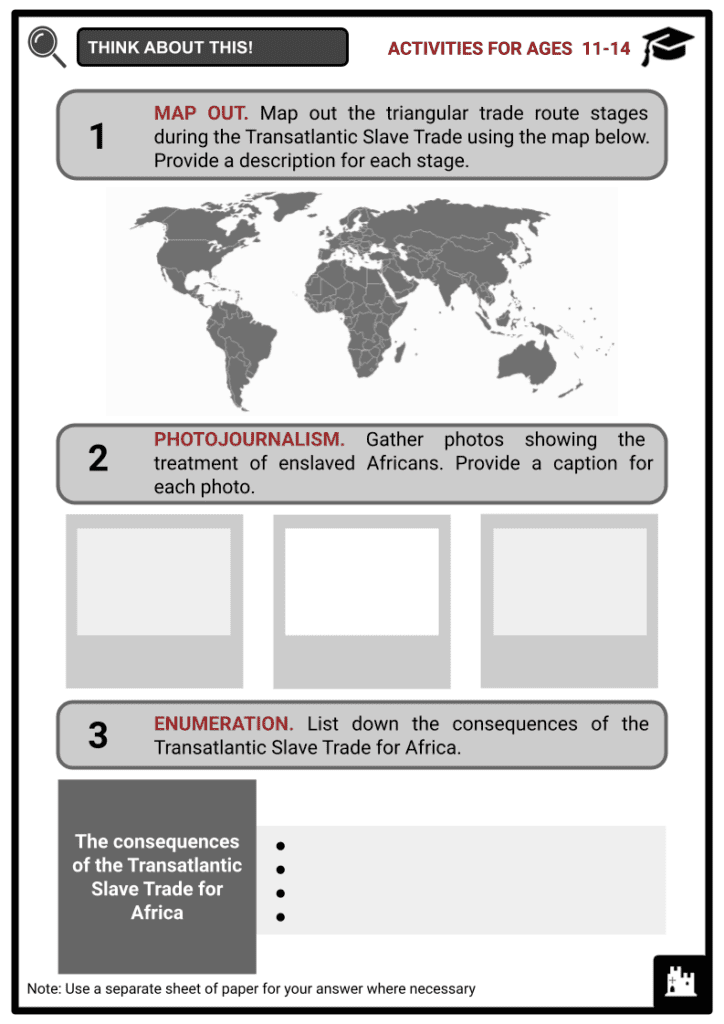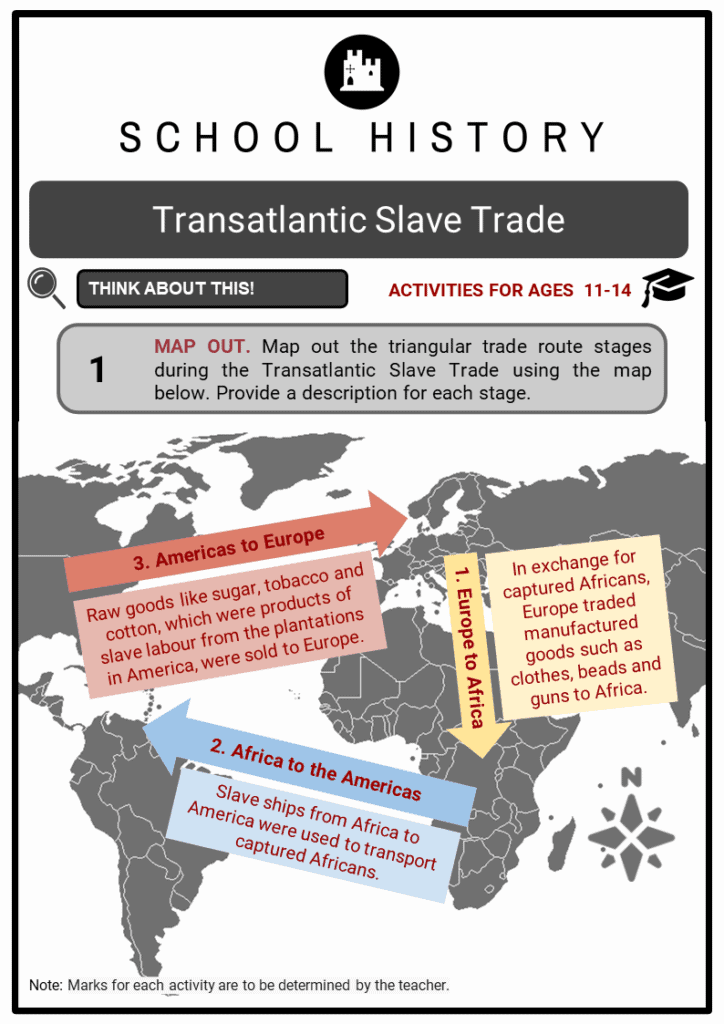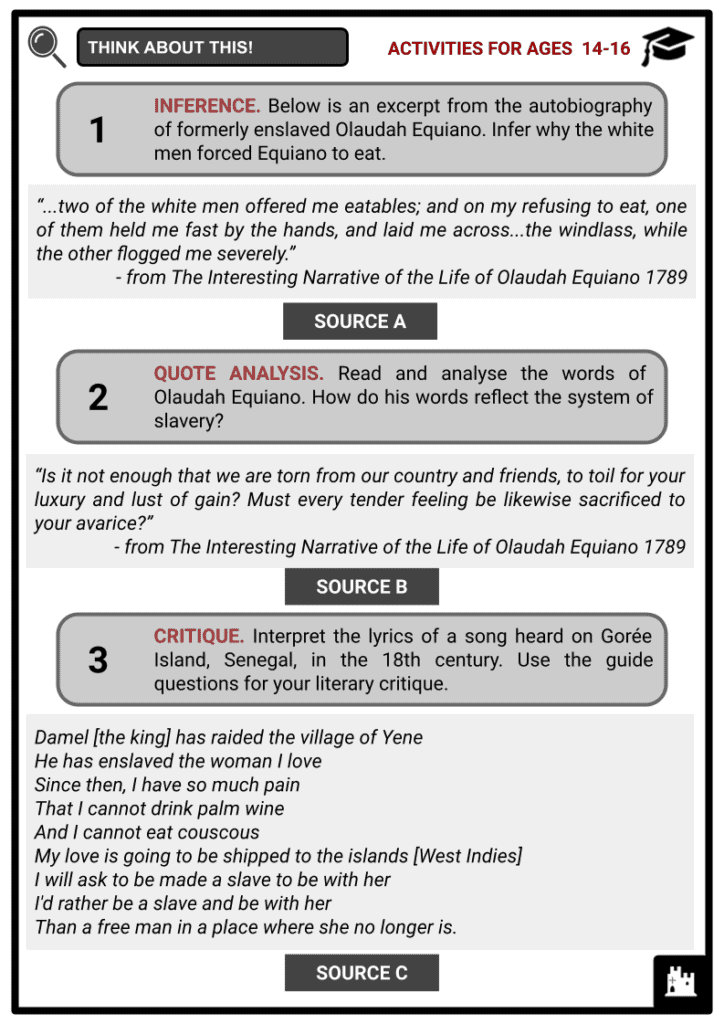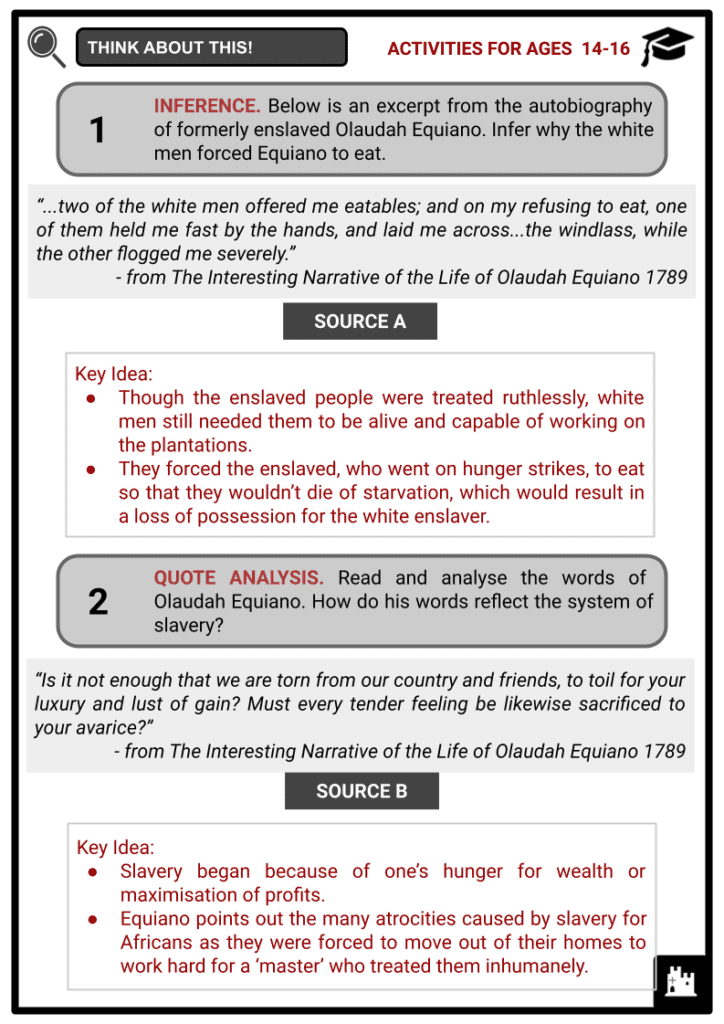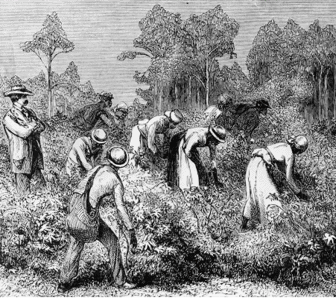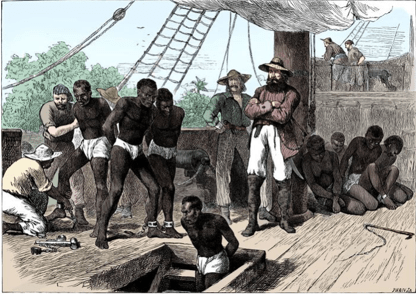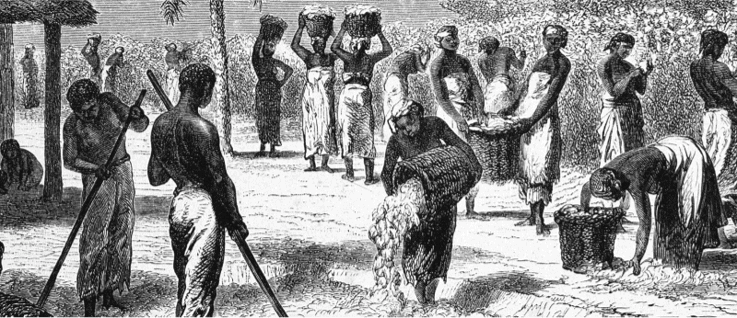Download Transatlantic Slave Trade Worksheets
Do you want to save dozens of hours in time? Get your evenings and weekends back? Be able to teach Transatlantic Slave Trade to your students?
Our worksheet bundle includes a fact file and printable worksheets and student activities. Perfect for both the classroom and homeschooling!
Table of Contents
Add a header to begin generating the table of contents
Summary
- Origin of slave trade
- The Transatlantic Slave Trade
- The role of enslaved people on plantations
- The treatment of enslaved people
- Aftermath of the slave trade: the consequences for Africa; the African diaspora; the forging of a rationale
Key Facts And Information
Let’s know more about the Transatlantic Slave Trade!
- The Transatlantic Slave Trade (also called Atlantic Slave Trade or Triangular Slave Trade) was a 15th century to mid-19th century forced migration of enslaved people by slave traders through a triangular trade spanning the continents of Europe, America and Africa. The trade had both its advantages and disadvantages in the continents.
- In Europe, the slave trade influenced its economic growth and market development to expand all across the continents. As they traded their manufactured goods for enslaved Africans, enslaved people were then transported to the Americas. The Americas, in turn, would produce plantation crops that would later be shipped to Europe. This triangular trade route redefined the slave trade.
- In the Americas, enslaved people were a huge deal for its labour intensive economy. Despite contributions to their profits, however, enslaved people were treated unfairly and ruthlessly - often seen as mere properties rather than human beings.
- In Africa, kings and merchants started to trade their own kind in exchange for goods, firearms and the like in order to protect their kingdom from neighbouring enemies. As the slave trade grew and the demand for enslaved people rose, the depopulation of Africa made agriculture almost impossible due to the lack of workforce. Moreover, the dispersal of many Africans across the continents resulted in an African diaspora.
- The Transatlantic Slave Trade, although ended, had an impact that continued long after its abolition. Because the system of slavery was opposed to the rights of all human beings regardless of race, religion and scientific racism were used to fabricate its rationale. This was the people’s last attempt to defend such an inhumane act that had existed for centuries across continents.
Origin of Slave Trade
- In the New World, expanding European empires lacked a workforce as a major resource.
- Though there were indigenous peoples and Europeans, both were considered unreliable due to health reasons.
- The indigenous peoples and Europeans were prone to sickness and unsuited to the climate, often suffering from tropical diseases; whereas the Africans were excellent workers resistant to diseases.
- Moreover, they already had extensive experience in agriculture and livestock. For this reason, the European empires thought they were ‘ideal to be slaves’.
- African slavery, on the other hand, had already existed for centuries in various forms: some were indentured servants who had the chance to buy their freedom; others were similar to European serfs.
- Nonetheless, when white captains came to offer manufactured goods and the like, African royalties and merchants did not hesitate to trade their own kind.
- As early as 1562, the first slaving voyage left England.
- Led by John Hawkins, enslaved Africans were sold in Santo Domingo for a huge profit.
- By the mid-16th and 17th centuries, a number of British merchants began to establish charters and settlements on the west coast of Africa for gold, ivory, dyewood and indigo.
- Due to the lucrative profits of the continent of Africa, competition between the European powers of Holland, Denmark and Portugal grew.
- Rivalry further increased with the introduction of slavery.
The Transatlantic Slave Trade
- The Transatlantic Slave Trade occurred from the late 15th to mid-19th century, spanning three continents: Europe, the Americas and Africa.
- John Hawkins was the first Briton to engage in the slave trade in 1562, making a considerable profit transporting enslaved people from Africa to the Caribbean Islands.
- By the time the Transatlantic Slave Trade was coming to an end in 1808, only 6 percent of enslaved Africans landing in the New World were going to North America.
- In the mid-16th and 17th centuries, a number of British merchants began to establish charters and settlements on the west coast of Africa for gold, ivory, dyewood and indigo.
- Due to the lucrative profits to be found on the continent of Africa, competition between the European powers of Holland, Denmark and Portugal grew.
- Rivalry grew further with the introduction of slavery.
- An estimated 10 to 12 million enslaved Africans were transported to the Americas between the 16th and 19th centuries.
- The trade crossed the Atlantic Ocean, which completed the three stages of the triangular trade.
- The top four nations of African slave trafficking to the Americas were: Portugal, with more than 6 million enslaved, Great Britain, with more than 3 million enslaved, and France and Spain with more than 1 million enslaved.
- Between 1640 and 1807, the British slave trade dominated the industry.
- To aid the labour-intensive cultivation of tobacco in the Jamestown colony, about 20 enslaved Africans were purchased from Dutch privateers.
- As demand for labour intensified, the British crown expanded the slave trade in its colonies in the Americas.
- Through the Navigation Act of 1660, only English-owned ships were allowed to enter its colonies.
- To further expand the slave trade monopoly, Charles II had sole rights to the Company of Royal Adventurers Trading into Africa, or simply Royal African Company (RAC).
- Overseen by James, the Duke of York, Britain monopolised the trade of gold, silver, and enslaved people from West Africa.
- The Royal African Company (RAC) shipped more enslaved Africans to the Americas than any other institution during the Transatlantic Slave Trade.
- In 1750, there were about 235,000 enslaved Africans, of which 85% lived in the south.
- With the expansion of the slave trade, plantation farming also grew, specifically in South Carolina and Georgia.
Treatment of Enslaved people
- Before being transferred, the enslaved Africans marched to slave forts on the coasts where they were shaved to prevent lice, branded, and loaded onto slave ships.
- They were chained together in pairs using handcuffs and leg irons with the right wrist and right ankle connected to the left wrist and left ankle of another.
- During the trip, they were packed into tiers below the deck of the ship to maximise the profit of each ship.
- They were chained together under low ceilings that prevented them from sitting upright.
- The temperature was extremely high and oxygen levels were very low.
- Though the Africans were used to bad environmental conditions, they weren’t immune to diseases; thus, if they encountered a disease along the way, their dead bodies were thrown overboard.
- Furthermore, their ears were cut off as proof of purchase.
- After arriving in another country away from their homelands, they were treated ruthlessly and unfairly, especially those working on plantations.
- Like with other colonial empires, enslaved people were at the bottom of the social hierarchy, with little to no legal rights.
- They were treated as property and sold in market places.
- Aside from working hard, the lives of the enslaved were entirely dependent on their enslavers.
Enslaved People On Plantations
- Although the plantations were on American soil, and although its workers were unpaid enslaved Africans, Europe possessed full control of these lands and their revenue.
- In essence, the overseas territories and unpaid labour fuelled European economic growth for centuries.
- When the British economy started flourishing and more jobs became available, cheap labour was still needed on the plantations in order to sustain the growing demand for products exported to Europe.
- As a consequence, importing enslaved people from Africa became a ‘morally, legally, and socially acceptable’ trend both within Europe and the new colonies.
- In the 16th century, the term ‘plantation’ designated overseas areas in which the English had settled. Examples of such zones included Massachusetts Bay and Virginia.
- The settlers were able to thrive by exporting the natural resources that these lands had to offer: exotic goods started to be exported from the Americas to Europe.
- In Virginia, tobacco plantations became dominant. By the 19th century, southern colonies produced cotton, while many wealthy landowners planted a variety of crops including coffee, rice, sugarcane, and indigo.
- Enslaved people were primarily engaged in agriculture, which was the backbone of the southern economy, working on indigo, tobacco, and rice plantations on the southern coast in Maryland, Virginia and Georgia.
- They made up a tenth of the total southern population in 1680, and grew to a third by 1790.
- None of the primary crops grown by the enslaved were necessary to sustain human life but rather, mere pleasures of men. Slavery, technically, is an early by-product of a consumer culture that existed in purchasing of goods for pleasure rather than sustenance.
Consequences for African Societies and Economies
- African kings and merchants did not treat the people they sold as fellow Africans, rather they treated them as prisoners of war.
- By selling them to European slave traders, kings enriched and strengthened their own realms to protect themselves against neighbouring enemies.
- However, when the demand for enslaved people became high, it created intense competition in African kingdoms.
- The slave trade then became an arms race in African societies as they traded enslaved people for European firearms to defend their kingdoms.
- The loss of hundreds of people led to devastating consequences for African economies.
- Men, women, and even children were either taken or lived in constant fear of being taken by slave traders.
- Moreover, since most of the enslaved taken were men, only women were left in Africa, resulting in depopulation and greater long-term demographic effects.
- Agriculture in Africa became almost impossible with people unable to conduct any business.
- The African slave trade created ethnic and social divisions in African society as it projected political violence and lawlessness for neglecting human life.
- In addition, when the slave trade was outlawed in the Americas and Europe, African kingdoms started to collapse as they had become too dependent on slave trading.
- This left Africa open to conquest and colonisation.
Dispersal through Slave Trade: The African Diaspora
- The Transatlantic Slave Trade represents the largest forced migration in human history that made Africans migrate from their ancestral homelands to other parts of the world, creating an ‘African Diaspora’ in the modern world.
- Pan-Africanism, or the idea that people of African descent have the same interests and therefore should be unified, later evolved from the dispersal of Africans. Despite the diaspora being rooted in the slave trade, voluntary migration is now used to refer to the dispersal as well.
Forging a Rationale of the Slave Trade
- After the immoral and dehumanising act of exploiting the African race to boost profits, the system tried to justify the reason for the slave trade using two factors: religion and scientific racism.
- Religion
- Africans in Western and Central Africa have diverse ethnic and spiritual traditions, different from the European slave traders’ Christian beliefs.
- Similar to the Manifest Destiny during the westward expansion, they claimed that enslavement would teach Africans Christian beliefs to help them save their eternal souls.
- Manifest Destiny was the belief of many Americans in their divine mission to expand territories from coast to coast in North America a.k.a. westward expansion. White settlers believed that they could utilise the land more effectively than the indigenous inhabitants, who were either Spanish-Mexicans or Native Indians. White settlers regarded these people as lazy and savage, respectively.
- Scientific Racism
- Some scientific theories suggest that the black race was closely linked to apes and other animals, making them physically, intellectually, and biologically inferior to other human races and so they were destined to be enslaved.
- Theories as such were termed to be scientific racism that attempted to rationalise the exploitation of Africans for the maximisation of profits. This evolved to infer cultural and social inferiority.
Image sources:
- http://static.independent.co.uk/s3fs-public/thumbnails/image/2015/08/22/18/Anti-slavery-1.jpg
- https://www.thoughtco.com/thmb/nvei3HyEbK8cnnRYeAl083XfuAc=/768x0/filters:no_upscale%28%29:max_bytes%28150000%29:strip_icc%28%29/captives-being-brought-on-board-a-slave-ship-on-the-west-coast-of-africa--slave-coast--c1880-802464822-59fb46fc0d327a003632d7d3.jpg
- https://cdn.cnn.com/cnnnext/dam/assets/150821220118-slavery-plantation-super-tease.jpg

